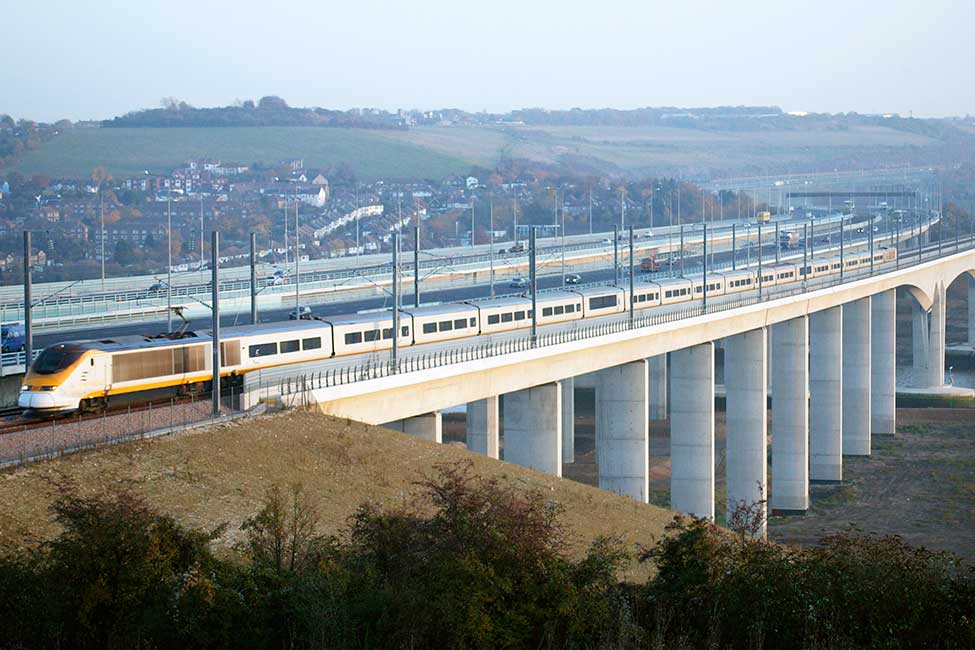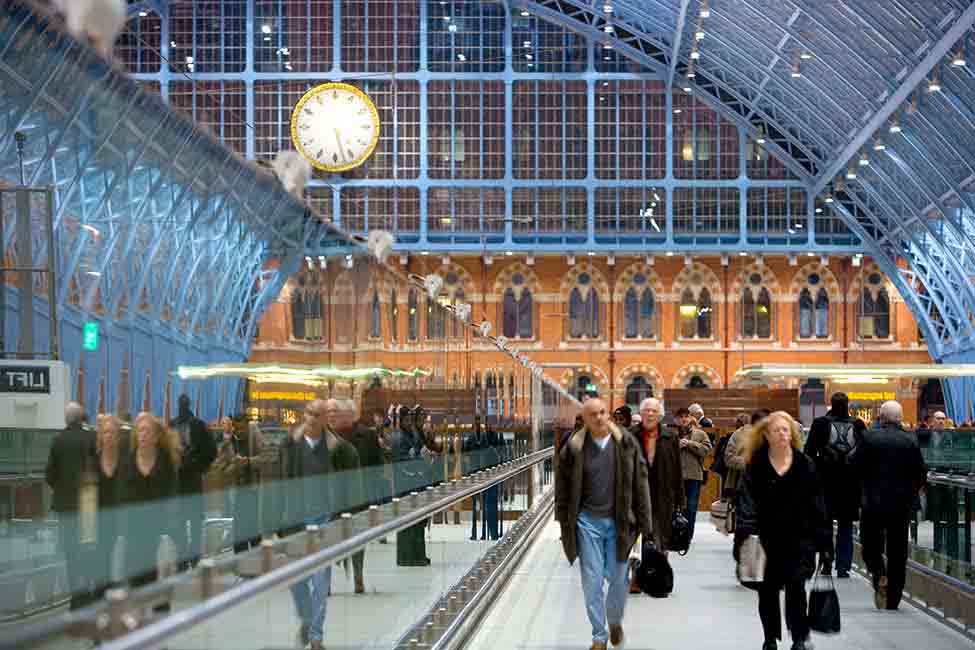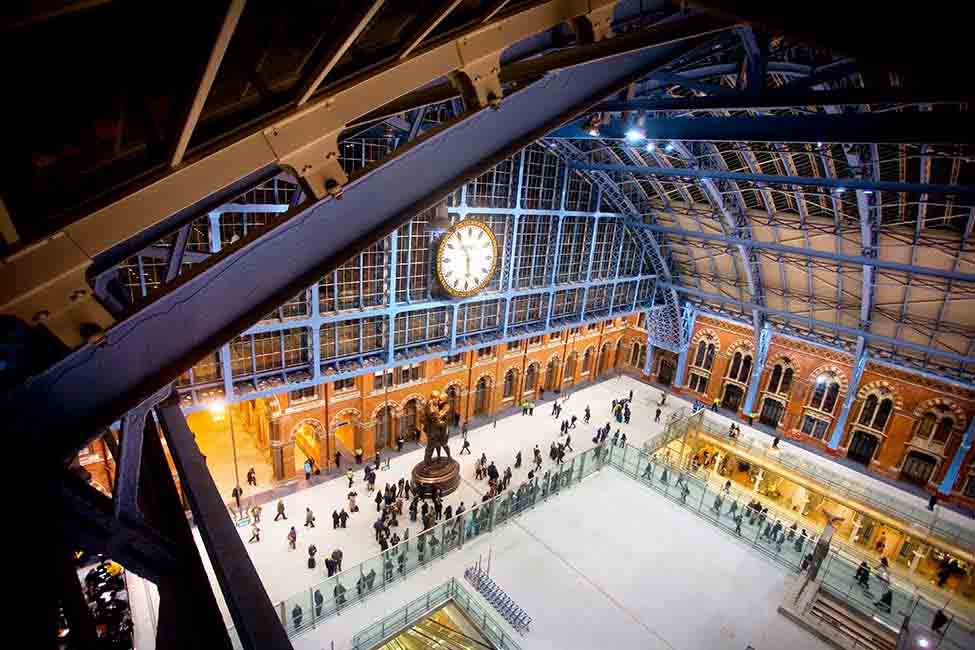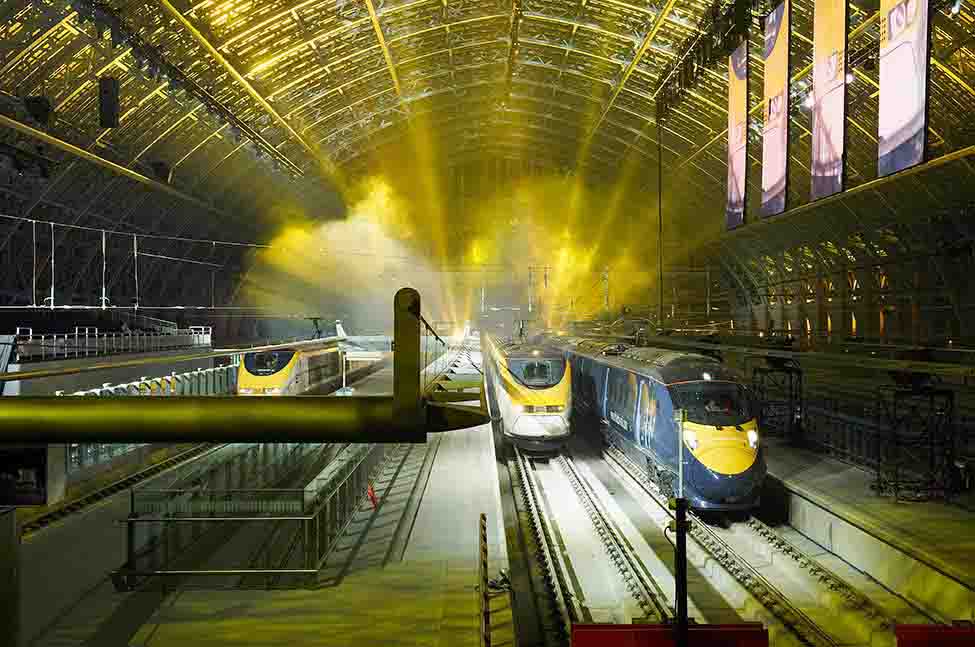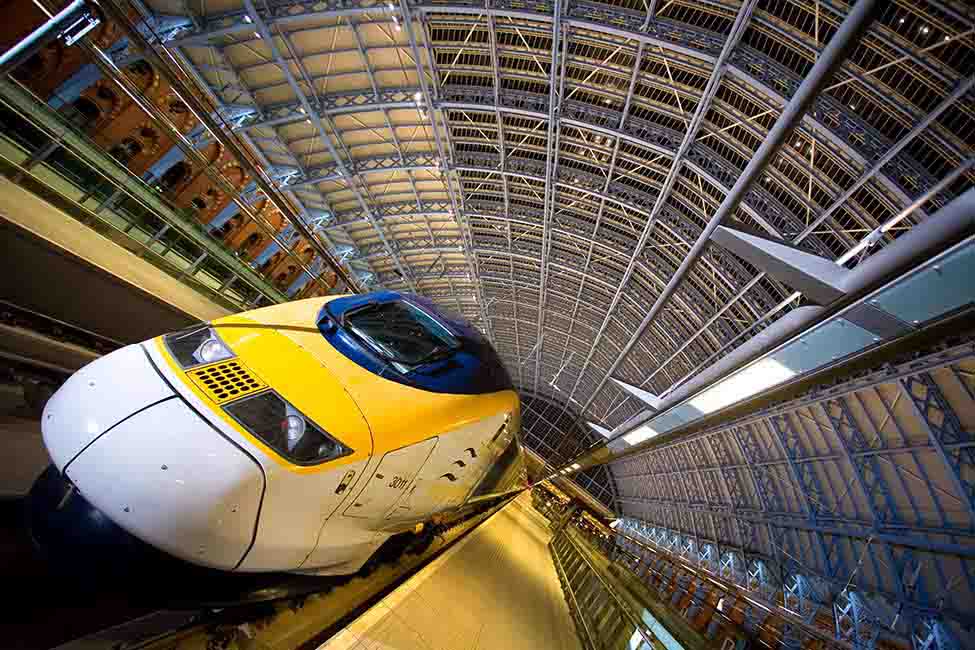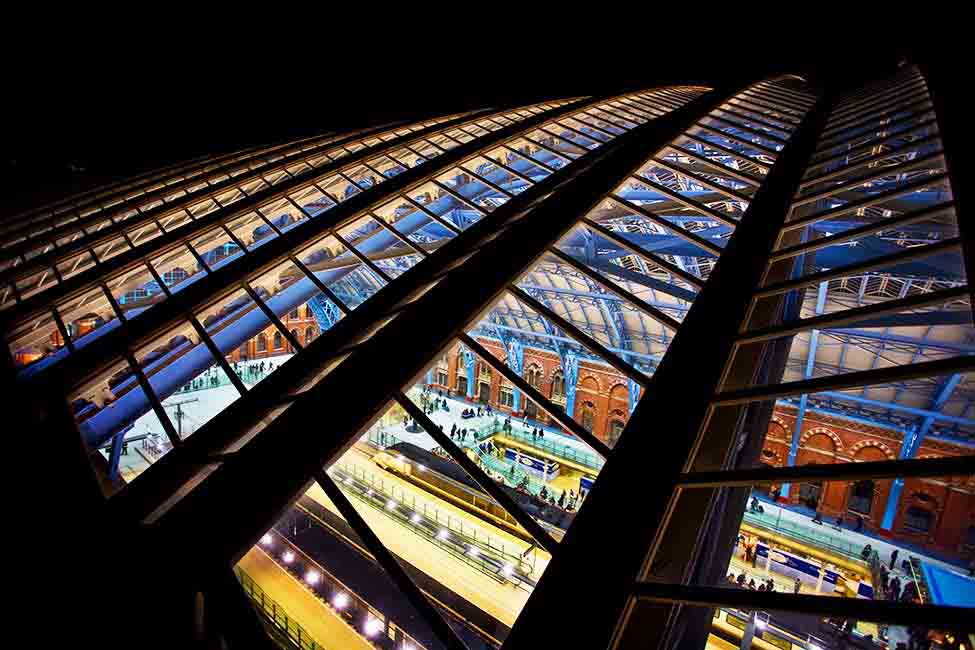When the Bechtel-led Rail Link Engineering consortium completed High Speed 1 in 2007, this new high-speed rail line halved travel time between London and the Channel Tunnel, and chopped 35 minutes off trips to Paris and Brussels.
The High Speed 1 program―formerly known as the Channel Tunnel Rail Link―also created a faster shared line for domestic trains. Long distance commuters now reach central London in less than half of their previous travel time. It was the UK’s first high-speed rail project and Britain's first new railway in a century.
A faster link to Europe’s high-speed rail network
Image Gallery
Environmentally sound
Dozens of ecologists studied the HS1 route to help minimize the project’s impact on wildlife, and worked with engineers and landscape architects to protect existing habitats and provide new ones.
- 1.2 million native trees and shrubs planted
- 938 acres (380 hectares) of grassland and wildflower meadows seeded
- 15 miles (25 kilometers) of hedgerows created as wildlife habitat
Over, under, around, and through
HS1 was one of Europe's largest construction projects when it was built. The project created 68 miles (109 kilometers) of high-speed track, enabling Eurostar trains to travel up to 186 miles (300 kilometers) per hour.
The line crosses the River Medway, tunnels under the River Thames, and threads above and below ground through North and East London before terminating at St. Pancras International Station, now Europe’s largest passenger interchange. The project included a painstaking reconstruction of the historic station.
Visualizing a safer railway
As trains round corners, poor signal visibility could lead to serious accidents. Bechtel-developed software enabled our engineers to take the virtual 'driver’s seat', as they planned the placement of overhead electrification poles and bridge structures.
The software combined drawings of track sections and earthworks with models based on the engineers' initial designs. The drive-through visualizations helped Bechtel's team foresee how to best modify their layouts for maximum visibility—and safety.
A nation builds on HS1's success
HS1 enabled the delivery of three major developments—in Ebbsfleet, Stratford, and King’s Cross—and brought economic benefits to other regeneration areas along the route, through population growth, better connectivity, and greater employment opportunities.
New and revitalized stations allow travelers from outlying areas to transfer to high-speed trains without traveling into central London to board.
Renovated station stokes Kings Cross revival
The reopening of historic St Pancras International station in 2007 was a milestone that marked the ceremonial end of a decade of Bechtel involvement on HS1. The landmark’s revival—under Bechtel’s oversight—was a masterstroke in what has become a regeneration of the entire King’s Cross neighborhood. In addition to serving as a state-of-the-art international transportation terminal, the renovated station has stimulated the rebirth of nearby historic hotels, restaurants, and other businesses to serve passengers, tourists—and fans of architecture.
St. Pancras backstory
It’s hard to imagine now, but London’s glorious St Pancras International Station was once underutilized and crumbling. As our customer’s candidate to replace Waterloo Station as the UK terminus for Eurostar trains, St Pancras’s challenging renovation fell under Bechtel’s watch.
The 150-year-old Victorian Gothic structure is protected as a building of historic interest, making the renovation a complicated fusion of delicate reconstruction, cleaning, partial demolitions, and rebuilding from scratch using original plans.
Where we couldn’t salvage and reuse original materials, we sought the closest alternatives. We sourced nearly a million red bricks from the same works that created the originals and purchased new roof slates from the original quarry in Wales. Workers recoated ironwork in a historic train shed with paint painstakingly matched to the original sky blue to meet English Heritage specifications.


